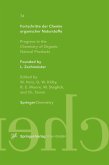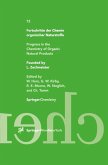The volumes of this classic series, now referred to simply as "Zechmeister" after its founder, L. Zechmeister, have appeared under the Springer Imprint ever since the series' inauguration in 1938. The volumes contain contributions on various topics related to the origin, distribution, chemistry, synthesis, biochemistry, function or use of various classes of naturally occurring substances ranging from small molecules to biopolymers. Each contribution is written by a recognized authority in his field and provides a comprehensive and up-to-date review of the topic in question. Addressed to biologists, technologists, and chemists alike, the series can be used by the expert as a source of information and literature citations and by the non-expert as a means of orientation in a rapidly developing discipline.
Glycosmis is a clearly defined genus within the tribe Clauseneae of the Aurantioideae subfamily of the family Rutaceae comprising about 40 species (1). Its range of distribution is centered in south and southeast Asia (India, Sri Lanka, Myanmar, Thailand, Malaysia, Indonesia) and extends to south China and Taiwan as well as to New Guinea and north Australia. Exceptions are only cultivated species like the Chinese G. parvijiora (Sims) Little, formerly called G. citrifolia (Willd. ) Lindley, which became naturalized in tropical America and Africa (Angola) (1). The shrubs or small trees are unarmed and possess pinnate or simple leaves with translucent punctate glands emitting an aromatic odor when crushed. The axillary inflorescences are usually dispersed closed panicles with small white flowers. The fruits are mostly pink, reddish or white berries of about I cm in diameter with only one or two seeds. The genus name Glycosmis originates from the sweet smell of the flowers and the sweet taste of the fleshy pericarp of the fruits. A good field and herbarium character of the genus is that the buds of new leaves are usually covered with short rusty-red hairs. In spite of the good delimitation of Glycosmis from the other closely related Clauseneae genera Clausena, Micromelum, Murraya, and Merrillia and the already existing subrevisionary treatment by Stone (1), there are still many unresolved taxonomic problems at the species level.
Hinweis: Dieser Artikel kann nur an eine deutsche Lieferadresse ausgeliefert werden.
Glycosmis is a clearly defined genus within the tribe Clauseneae of the Aurantioideae subfamily of the family Rutaceae comprising about 40 species (1). Its range of distribution is centered in south and southeast Asia (India, Sri Lanka, Myanmar, Thailand, Malaysia, Indonesia) and extends to south China and Taiwan as well as to New Guinea and north Australia. Exceptions are only cultivated species like the Chinese G. parvijiora (Sims) Little, formerly called G. citrifolia (Willd. ) Lindley, which became naturalized in tropical America and Africa (Angola) (1). The shrubs or small trees are unarmed and possess pinnate or simple leaves with translucent punctate glands emitting an aromatic odor when crushed. The axillary inflorescences are usually dispersed closed panicles with small white flowers. The fruits are mostly pink, reddish or white berries of about I cm in diameter with only one or two seeds. The genus name Glycosmis originates from the sweet smell of the flowers and the sweet taste of the fleshy pericarp of the fruits. A good field and herbarium character of the genus is that the buds of new leaves are usually covered with short rusty-red hairs. In spite of the good delimitation of Glycosmis from the other closely related Clauseneae genera Clausena, Micromelum, Murraya, and Merrillia and the already existing subrevisionary treatment by Stone (1), there are still many unresolved taxonomic problems at the species level.
Hinweis: Dieser Artikel kann nur an eine deutsche Lieferadresse ausgeliefert werden.








